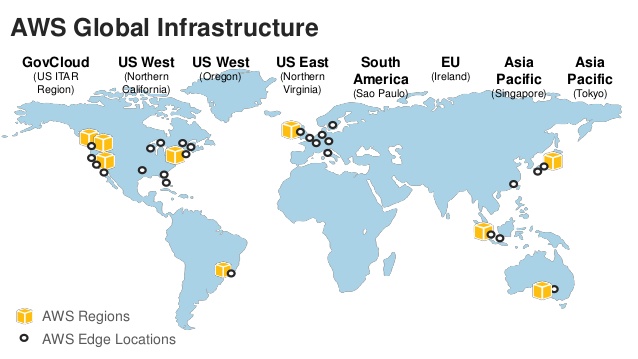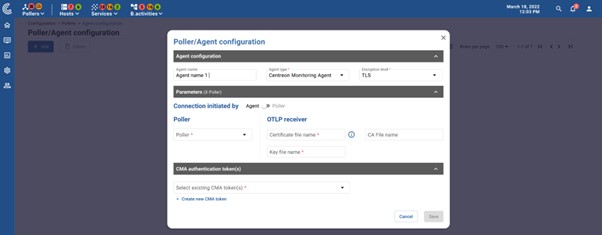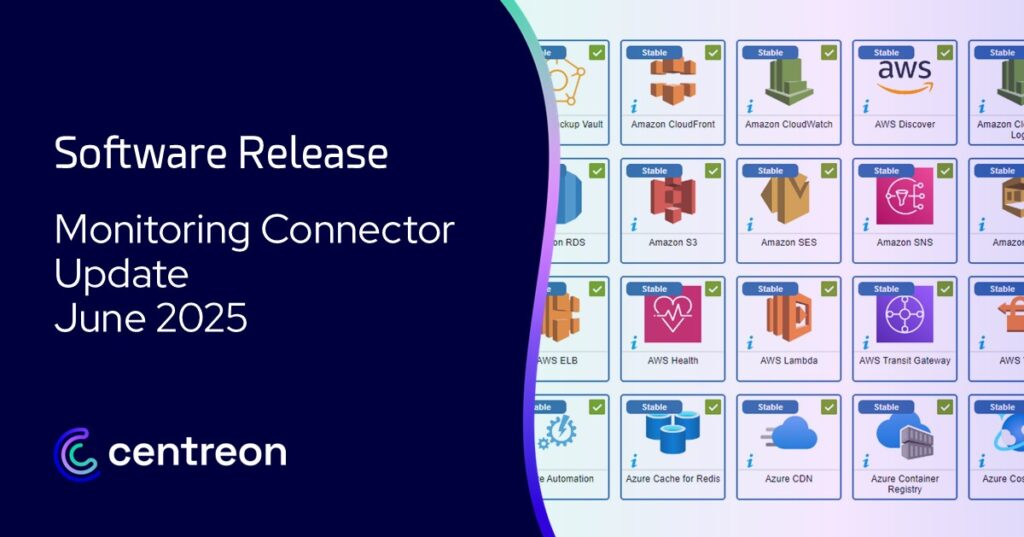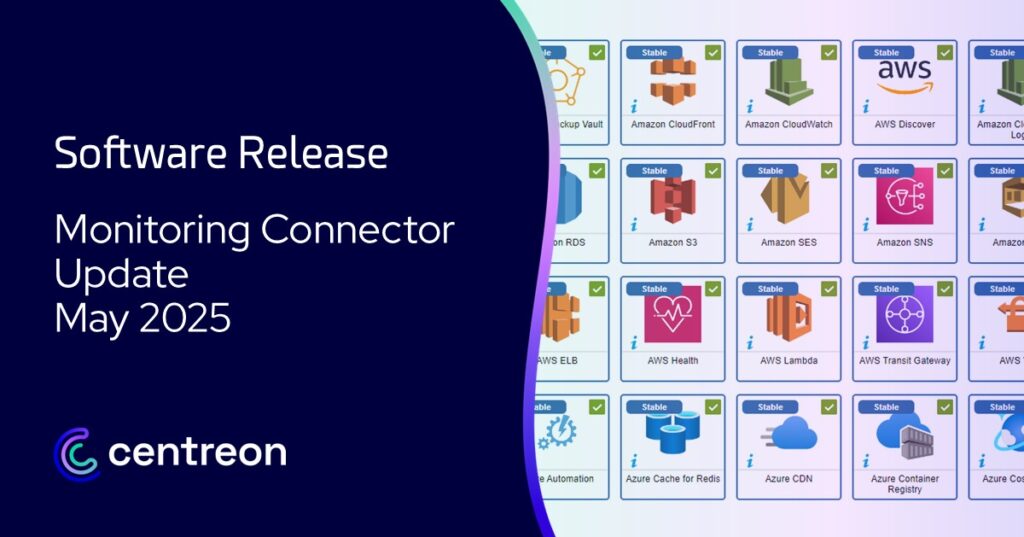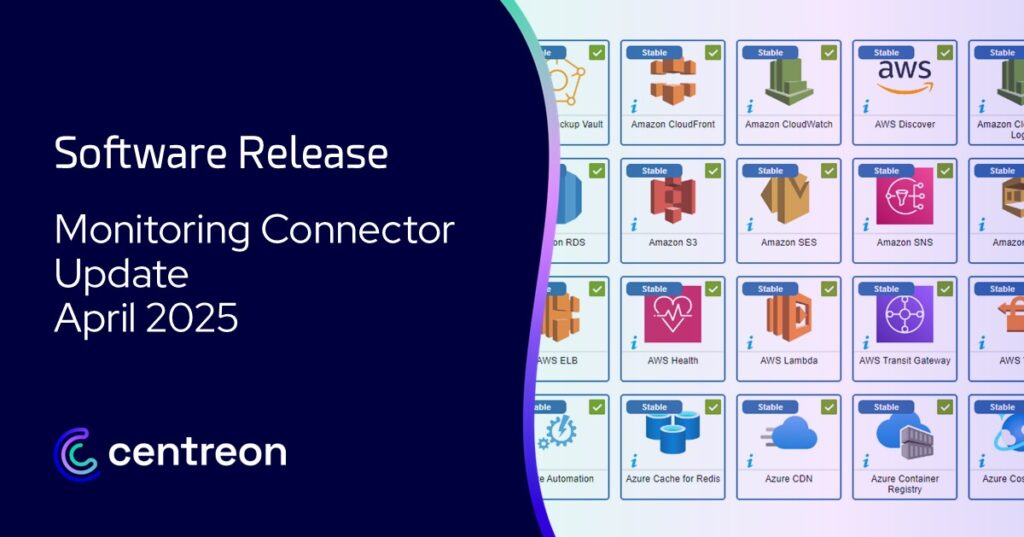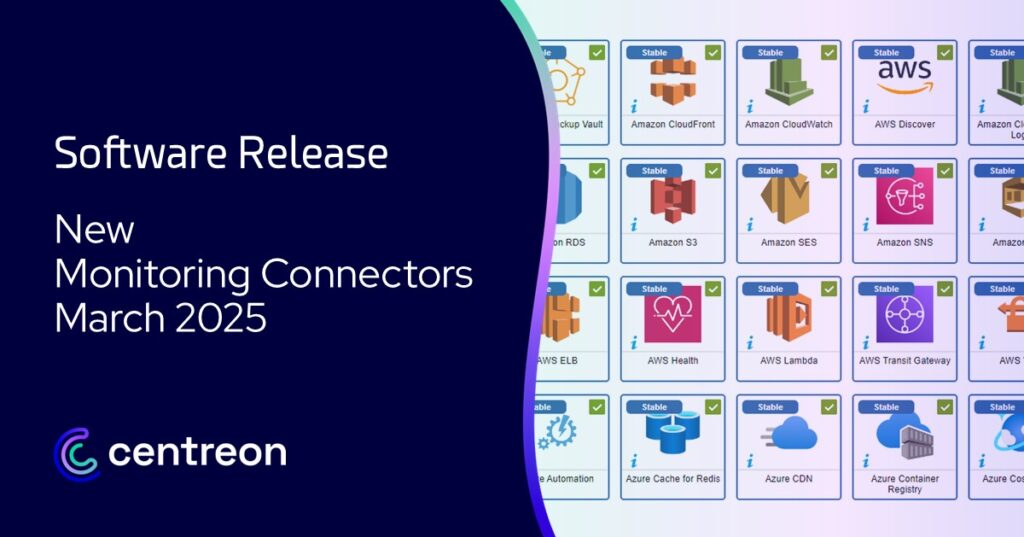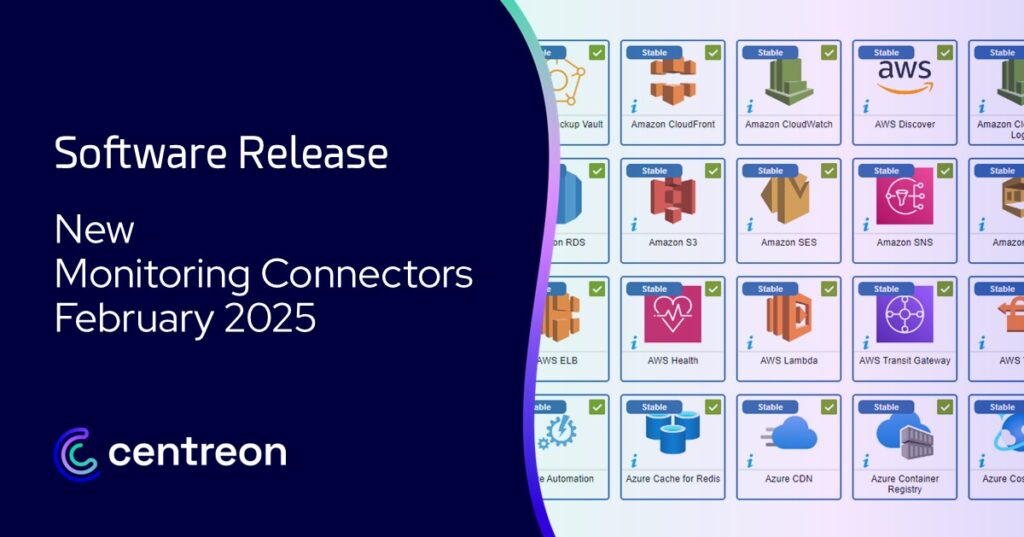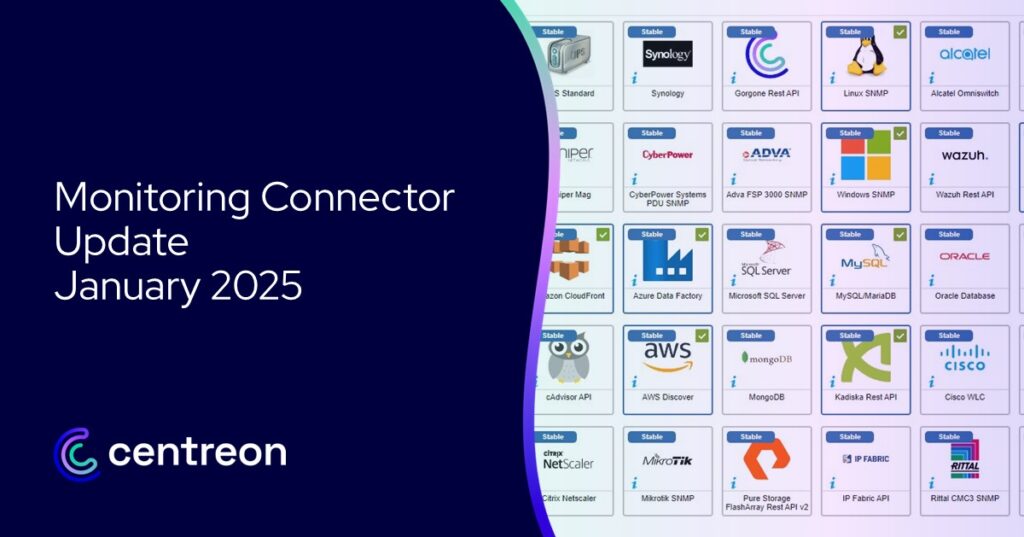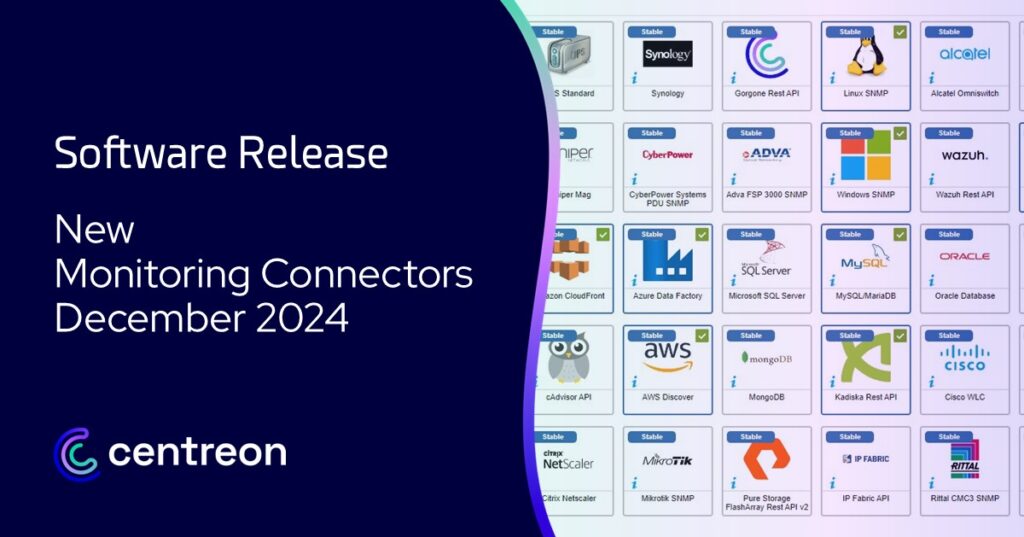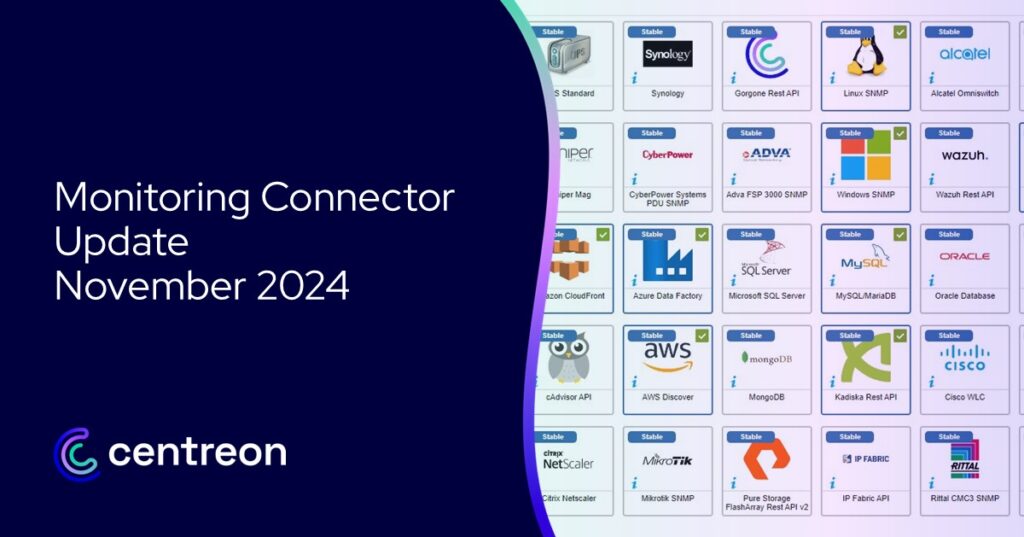Managing hybrid IT infrastructure is the new norm as most businesses embrace the latest IaaS or SAAS solutions, combining them with existing on-premise or branch-based legacy systems. You may already use or are looking to use Amazon Web Services and Amazon Cloud Watch, a market favorite. Maintaining an hybrid IT system is not what you worry about. The real worry is having to juggle between old and new monitoring solutions, losing your prime, 360-degree view on infrastructure, and baking a mishmash of monitoring metrics.
Well, it doesn’t have to be. With a little help from Centreon, you can consolidate all metrics on a single monitoring tool, maintain the productivity of your operations team and basically laugh at the added complexity, because you get to keep a clear and split-second accurate view on the availability and performance of all IT services – old or new.
Read on for a discussion on hybrid IT systems, integrating AWS resources to your legacy systems for monitoring purposes.
From complex to hybrid
There was a time when the term “complex” mostly applied to an IT system distributed over a large national or global network. Another level of complexity was added with the succession of technological generations that now coexist in a company’s IT system. Many IT basements still house proprietary systems hailing from the 80s, bravely supporting critical business applications to this day. As you still have to monitor and manage distributed and on premise legacy systems, you are also embracing the cloud in all its forms: private or hosted, or anywhere in between, with cloud solution providers innovating and adding new services every single day. The transition from complex to hybrid is happening fast because the need is real: businesses urgently need more agility and scalability – not to mention more performance and cost-effectiveness.
Hybrid is the new black
In fact, hybrid is now the norm – a recent Gartner study estimated that by 2020, about 90% of organizations will be managing hybrid IT infrastructure. Chances are that in your organization, visualization and containerization are not just buzz words. They’re your reality. But how are you managing the integration of these newest solutions to your monitoring routine, for a seamless, crystal clear view of all your systems? Because let’s face it, your legacy systems are there to stay. At least for a while.
All seeing-eyes, no walls
Across business sectors and industries, ITIM and ITOM managers are telling us that not being able to see on the same dashboards, maps and reports all of their IT systems is a huge problem. As reliable as these services may be, you can’t really afford leaving out a large chunk of your infrastructure just because it is hosted on a service such as Amazon Web Services (AWS). You need the global, real-time visibility, you also crave that precious monitoring data.
It’s exactly for this reason – and to make your life much easier- that Centreon is introducing the AWS plugin packs. Because frankly, having to connect to multiple monitoring tools, such as Amazon Cloud Watch, is not an acceptable option either. With the AWS plugin packs, you get to bridge the gap between legacy and cloud, monitoring your entire infrastructure and collecting metrics from a single, central access point.
Integrating AWS resources into a central monitoring solution – using Centreon EMS, Centreon EPP or via open source
If you use a Centreon solution, integrating the resources that are Amazon-based in your central monitoring solution is now just as easy as it is adding traditional resources.
Centreon has therefore developed a set of AWS Plugin Packs. Each Plugin Pack collects the metrics for a given AWS service. The first collection covers EC2 services (per unit instance or per Auto-Scaling group), ELB, RDS, S3, CloudFront, ElastiCache.
Each Plugin Pack relies on a plugin that connects and authenticates itself to the Amazon Cloud Watch API in order to query it at regular intervals to monitor and log all the available metrics in Centreon.
As usual, we have included the host template in the pack, enabling the creation of a host for each instance that is deployed. All the associated service templates are also included. Overseeing the resources deployed in the Amazon Cloud has thus become as easy to implement as it is for traditional infrastructure. All you have to do is download the plugin packs and associated plugins, then create the hosts in just a few mouse clicks.
These Plugins Packs are now available for all Centreon EPP customers. In keeping with our usual practice, the associated plugins have been transferred to the open-source Centreon Plugins project, freely available.
The shortest path: centralized supervision with Centreon EMS
Centreon EMS is a complete, out-of-the-box solution for monitoring complex and distributed infrastructures. The Centreon EPP module lets you access a plugin packs library covering over 250 domains, which greatly facilitates the addition of resources to your monitoring system, regardless of the type of technologies – from the most traditional to the latest technological innovations.
Using Amazon Web Services (AWS)
Amazon Web Services is a IaaS pioneer and market leader, with industry analysts estimating their market share somewhere between 30% and 40%. You may be already using or looking to use Amazon Web Services and Amazon Cloud Watch, their monitoring tool, here are a few important considerations – and a few tips- on getting the most of this service and connecting them to your infrastructure monitoring system using Centreon plugin packs.
The AWS service offering is extensive: EC2 and EC2 Auto-scaling for computing power; ELB for load balancing; S3 for data storage; RDS for databases; ElastiCache for caching; and CloudFront for content delivery, to name just a few of the most widely used resources. And then, of course, you have Amazon Cloud Watch to monitor for AWS resources, a free service, at least for basic use. The free version includes an API, allowing up to a million monthly requests, which is more than enough. It is available in each AWS region. Once logged in and authenticated in a region, the API provides all collected metrics, usually viewable in the Amazon Cloud Watch portal.
Using Amazon Cloud Watch
Amazon Cloud Watch collects performance metrics for each of the AWS service instances that are deployed. Metrics collected depends on the instances deployed, for example: CPU or I / O disks for EC2; storage volume for S3; requests and transactions for RDS; and so on. Resources can be deployed in multiple Amazon centers around the world: there are five in North America, four in Europe, others in Asia or South America, with new regions opening up each year. The Amazon Cloud Watch portal provides access to all metrics for each of the locations where AWS services are used. Retention time for the metrics collected varies according to their precision: it is two weeks for measurements taken every minute, two months for measurements taken every five minutes, and fifteen months for a measurement taken every hour.
Centreon is making it easier for ITIM and ITOM managers to implement an elegant, integrated monitoring solution that removes all blind spots for a crystal clear, instant visibility into your infrastructure – whatever the age or localization of the systems. If you are embarking on an adventure in hybrid infrastructure, we’re your starting point.
Learn more on Centreon EMS or contact us to see how we can help you build a fantastic monitoring system.



